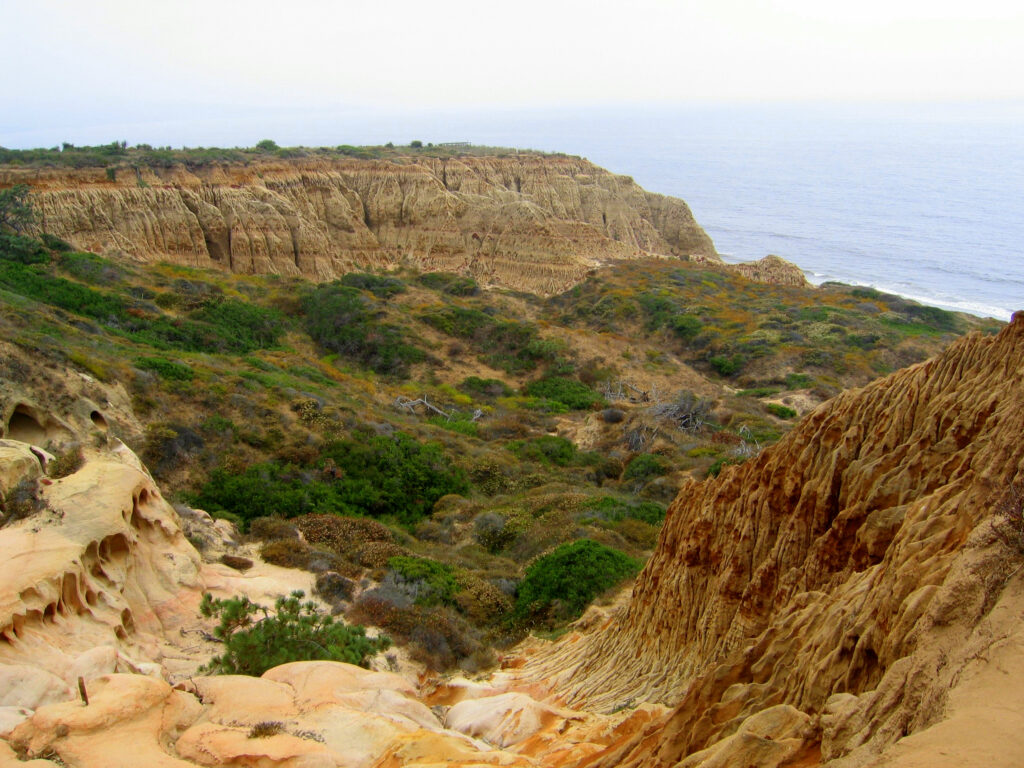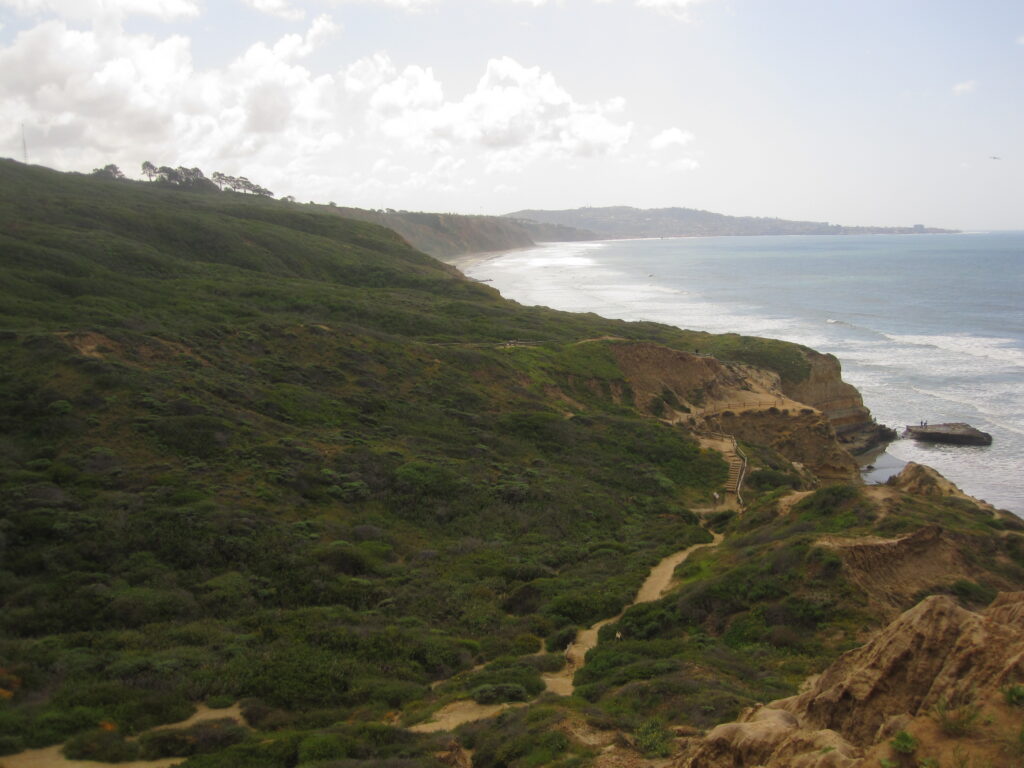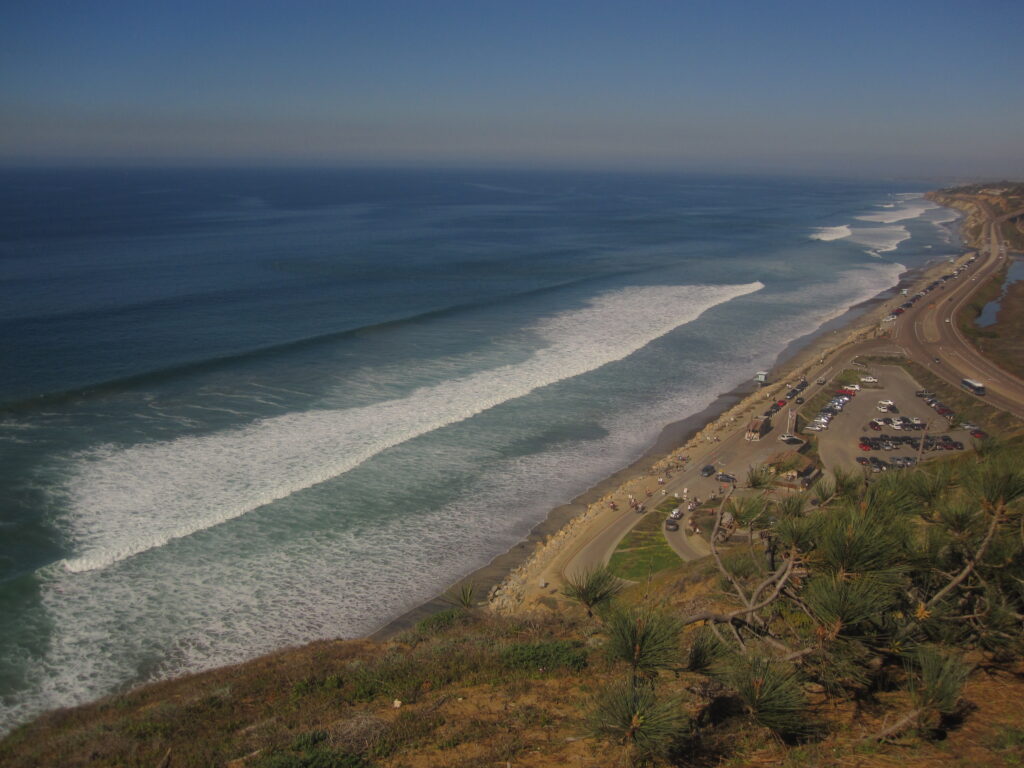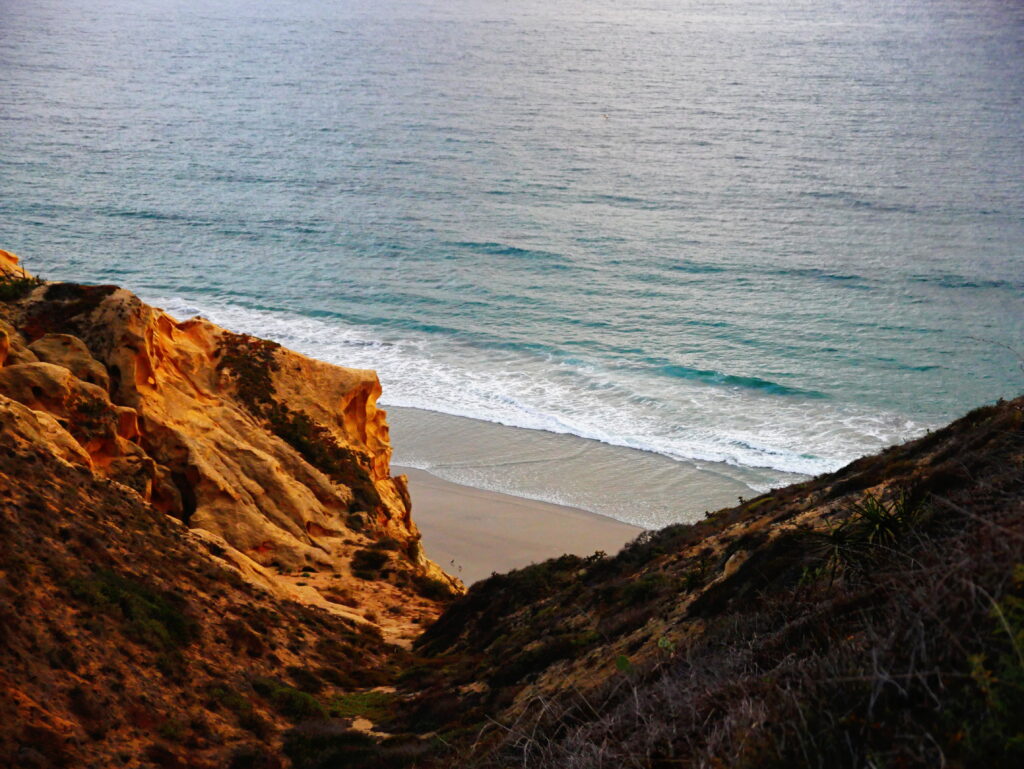Perched on the sun-kissed coastline of La Jolla, just north of San Diego, lies a landscape that feels both prehistoric and pristine. Torrey Pines State Natural Reserve is not just another beautiful California beach park; it is a protected sanctuary, a living museum, and a hiker’s paradise rolled into one. It’s a place where dramatic, golden-hued cliffs sculpted by time plunge toward the roaring Pacific, and where the rarest pine tree in North America clings to existence.
This is a wild island of tranquility set against the backdrop of a bustling city, offering a breathtaking escape for nature lovers, photographers, and anyone seeking to witness the raw, untamed beauty of the Southern California coast. A visit here is a journey back in time, a chance to walk the same bluffs the Kumeyaay people once did and to stand in awe of a landscape that has remained remarkably unchanged.

A Sanctuary for the Rarest Pine
The star of the show, and the Reserve’s namesake, is the magnificent Torrey Pine (Pinus torreyana). These are not your average pine trees. Gnarled and sculpted by relentless coastal winds, their silhouettes create a dramatic profile against the sky. What makes them truly special is their rarity; this species grows in only two places on Earth: here in this 1,750-acre reserve and on Santa Rosa Island, one of the Channel Islands off the coast of Santa Barbara.
The Reserve was established to protect these unique trees and their fragile coastal habitat. As you walk the trails, you’ll notice their long needles, their large, heavy cones, and the way their twisted branches seem to tell a story of survival. It’s a powerful reminder of the importance of conservation and the delicate balance of our natural world.

Choosing Your Path: Trails for Every Explorer
Torrey Pines offers a network of well-maintained trails that cater to all fitness levels, each providing a unique perspective of the Reserve’s stunning topography. While the hikes are generally short, they deliver unparalleled scenic rewards.
- Guy Fleming Trail (0.7-mile loop): Perfect for first-time visitors and families, this easy, mostly flat loop offers a fantastic introduction to the park. It features two stunning overlooks with panoramic views of the Pacific Ocean and Los Peñasquitos Lagoon. In the spring, the trail is adorned with vibrant wildflowers.
- Razor Point Trail (0.7-mile trail): This slightly more rugged path leads you through coastal sage scrub and iconic yucca plants to a dramatic overlook. From here, you can gaze down at the intricately eroded sandstone cliffs and watch waves crash into the sea caves below.
- Broken Hill Trail (1.2 to 1.4-mile trail): As the longest trail in the Reserve, Broken Hill offers a more immersive experience. It has two forks (North and South) that wind through chaparral and groves of Torrey Pines before descending towards the beach, offering a fantastic reward for your efforts.
No matter which path you choose, you’ll be treated to the salty tang of the ocean air, the sound of crashing waves, and views that will stay with you long after you leave.

Where the Bluffs Meet the Sand: Torrey Pines State Beach
Flowing directly from the base of the cliffs is the spectacular Torrey Pines State Beach. Accessible either by walking down from the bluff-top trails or from the parking lots along the coast highway, this long, sandy stretch is perfect for a post-hike cooldown. Kick off your shoes and stroll along the shoreline, hunt for seashells, or simply sit and watch the surfers and dolphins that often play in the waves.
The base of the cliffs reveals layers of geological history in the stunning sandstone formations. It’s a beautiful and dramatic landscape, offering a completely different experience from the high-bluff trails above.

More Than Just Trees: The Reserve’s Diverse Ecosystem
While the Torrey Pine is the main attraction, the Reserve is a thriving ecosystem teeming with life. The coastal chaparral and sage scrub habitats are home to a variety of plants adapted to the dry, salty air. Keep an eye out for Mojave yucca, prickly pear cactus, and fragrant black sage.
Wildlife is also abundant, though often shy. You might spot cottontail rabbits darting across the path, lizards sunning themselves on the warm sandstone, or even a coyote trotting through the brush at dawn or dusk. The ocean itself is a wildlife corridor; it’s not uncommon to see pods of dolphins cruising past or to witness the migratory path of gray whales during the winter months.
A Photographer’s Dream: Capturing the Golden Hour
For photographers and lovers of natural beauty, Torrey Pines at sunset is an almost spiritual experience. As the sun begins to dip toward the horizon, it bathes the entire landscape in a warm, golden light. The sandstone cliffs glow with an intense orange hue, and the gnarled Torrey Pines become dramatic silhouettes against a sky painted with shades of pink, purple, and gold. Find a spot at one of the many overlooks and watch as the day comes to a magnificent close—it’s a truly unforgettable Southern California moment.

Know Before You Go: Planning Your Visit
To ensure a safe and enjoyable trip while helping to preserve this fragile environment, keep these essential tips in mind:
- Location: 12600 N Torrey Pines Rd, La Jolla, CA 92037.
- Parking: There are two main paid parking lots: the South Beach lot (at the base of the hill) and the Upper lots (at the top near the trailheads). Parking is limited and fills up quickly, especially on weekends. Arrive early or be prepared to park along the coast highway and walk in.
- Hours: The Reserve is open daily from 7:15 AM to sunset. The entrance gate closes at sunset, so plan your hike accordingly.
- Important Rules: This is a Natural Reserve, not a park. Stricter rules apply to protect the habitat.
- No food or drink (other than water) is allowed on the trails. Picnics are only permitted on the beach.
- Dogs are not allowed anywhere in the Reserve or on the beach.
- Stay on the designated trails at all times. The cliff edges are fragile and dangerous, and walking off-trail damages the delicate plant life.
- What to Bring: Wear sturdy walking shoes, bring plenty of water, and don’t forget your camera!
Torrey Pines State Natural Reserve is a testament to the enduring power and beauty of nature. It’s a place to hike, to reflect, and to marvel at a landscape that has been preserved for all to enjoy. Plan your visit and discover one of San Diego’s most precious natural treasures.
